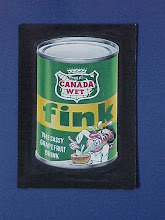Enter reification. What's reification? Basically it's making statements about a statement. RDF-wise, it is turning a triple into the subject of another triple. If you have a triple <a,knows,b> you can reify the triple as S and say <S,isAbout,a>. I use Jena - a Java API for processing RDF and OWL- and have used its reification support to implement named graphs. There were some performance issues here with large numbers of reified statements, but for reifying a single statement, as long as there are not a large number of properties for the reified statement, there will probably not be too much of a performance hit. That assertion hasn't been tested, though, so take it with a grain of salt.
To deal with preserving edge properties in OWL, you need to reify the triple that represents the edge in the RDF graph and then add triples representing the edge properties that have that reified statment as the subject. When I came across an edge in the source graph, I created triple, or Statement in Jena parlance, describing the edge, <s,p,o>, where s is is the source node resource, p is a property, and o is the target node resource (I'm implicitly assuming a directed graph):
Statement stmt = model.createStatement(s, p, o);
// create statement doesn't add the statement to the
// model, so add it.
model.addStatement(stmt);
I then reified the statement and added statements that had the reified statement as the subject for each edge property:
// reify the statement
ReifiedStatement reifiedStmt=
stmt.createReifiedStatement();
// Add "edge" propertes
Statement edgePropStmt=model.createStatement(reifiedStmt,
someEdgeProperty, "foo");
model.addStatement(edgePropStmt);
...On the client side, I checked any statement that had an object property as the predicate for reification. If it was a reified statement, I knew I was looking at an edge, so I extracted the property values and added them to the edge in the target representation:
// Check for reified statement
if (stmt.isReified()) {
RSIterator j=statement.listReifiedStatements();
while (j.hasNext()) {
Statement statement2 = k.nextStatement();
if (!statement2.getPredicate().equals(RDF.subject)
&& !statement2.getPredicate().equals(RDF.predicate)
&& !statement2.getPredicate().equals(RDF.object)
&& !statement2.getPredicate().equals(RDF.type)) {
// Add edge property to native graph representation
}
}The one thing to note here is that when you reify a triple, <s,p,o> as S, it implies the triples <S,rdf:type,rdf:Statement>, <S,rdf:subject,s>, <S,rdf:predicate,p>, and <S,rdf:object,o>. You need to filter these properties out when proecessing the reified statement.


No comments:
Post a Comment